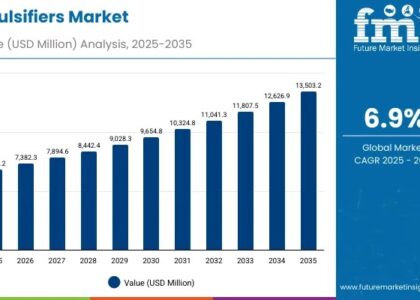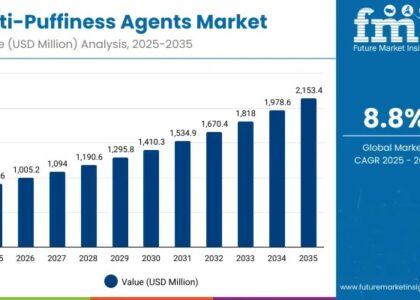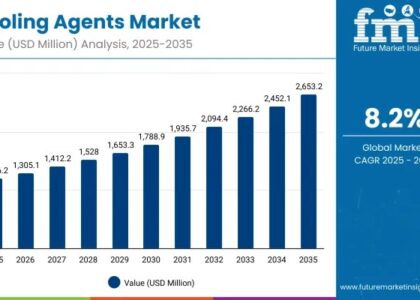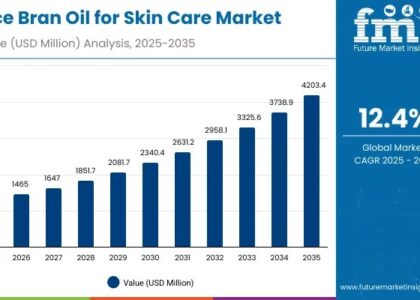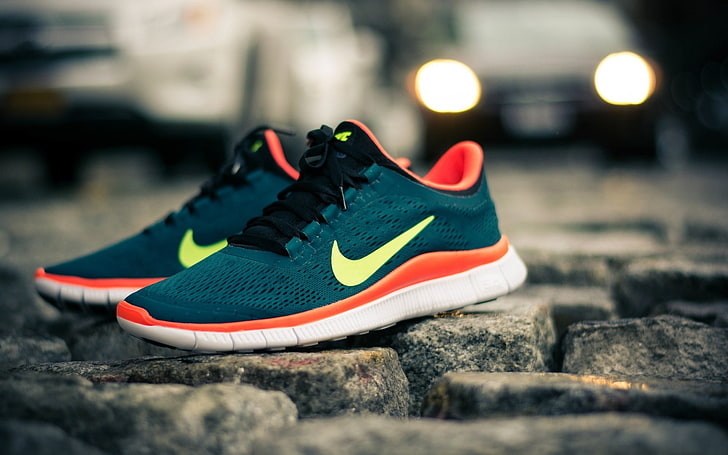
According to the latest data from Future Market Insights (FMI), the Sneakers Market is valued at US$ 72,232 million in 2022, with projections indicating a significant surge to US$ 1,39,876 million by 2032. This growth is forecasted to occur at a Compound Annual Growth Rate (CAGR) of 6.8% over the decade. The market’s expansion reflects the enduring popularity of sneakers globally, driven by factors such as fashion trends, lifestyle preferences, and increasing athletic participation. With such robust growth anticipated, the sneakers industry presents ample opportunities for innovation, branding, and market penetration in the coming years.
One of the key factors fuelling the growth of the sneakers market is the spread of e-commerce sites around the world. Every age group is becoming more inclined toward stylish, branded, and high-fashion footwear, and the rise in disposable income is driving up demand for more inventive and comfortable footwear, which is accelerating market growth. Increased consumer preference for online media due to its flexibility and population-wide rise in health and wellness concerns are other factors that are influencing the market.
Additionally, the market for sneakers is benefited by population growth, swift fashion trends, internet and smartphone penetration, and people’s bettering lifestyles. Additionally, the ease with which customised and cutting-edge features may be added to footwear creates lucrative prospects for market participants over the projection period of 2022 to 2032.
Request Sample Report: https://www.futuremarketinsights.com/reports/sample/rep-gb-16329
On the other side, it is anticipated that the accessibility of locally produced, duplicated, or fake items will restrain market expansion. The COVID-19 epidemic is expected to complicate the raw material supply chain, which will pose a problem for the sneakers market.
Growth Drivers:
- Fashion Trends: Sneakers have become a staple in fashion, transcending athletic wear to become a fashion statement. Influencers, celebrities, and fashion designers have played a significant role in popularizing sneakers as a must-have item.
- Athleisure Trend: The rise of athleisure wear, which blends athletic apparel with casual wear, has propelled the demand for sneakers. Consumers seek comfortable yet stylish footwear for everyday use, contributing to the market growth.
- Brand Collaborations: Collaborations between sneaker brands and fashion designers, artists, musicians, and even celebrities have fueled excitement and demand in the market. Limited edition releases and exclusive partnerships create hype and drive sales.
- Technological Advancements: Sneaker manufacturers continually innovate, introducing new materials, cushioning technologies, and designs that enhance comfort, performance, and style. Technological advancements attract consumers looking for the latest features in their footwear.
- Digitalization and E-commerce: The proliferation of e-commerce platforms has made it easier for consumers to access a wide range of sneakers globally. Online marketplaces, coupled with social media marketing and influencer endorsements, have expanded the market reach and accessibility.
- Growing Sports and Fitness Culture: Increasing awareness about health and fitness has led to a rise in sports participation and gym memberships. This, in turn, drives demand for athletic footwear, including sneakers, as consumers seek appropriate footwear for their activities.
- Customization and Personalization: Brands offering customization options allow consumers to design their own sneakers, adding a unique touch to their footwear. Customization services cater to individual preferences and tastes, attracting a segment of consumers seeking personalized products.
Industry Restraints:
- Counterfeiting and Knock-offs: The sneakers market faces challenges from counterfeit products flooding the market. Counterfeit sneakers not only undermine brand reputation but also pose risks to consumer safety and satisfaction.
- Supply Chain Disruptions: Disruptions in the global supply chain, such as raw material shortages, transportation issues, and production delays, can impact the availability of sneakers in the market and lead to increased costs for manufacturers.
- Price Volatility: Fluctuations in raw material prices, particularly for materials like rubber and leather, can affect production costs for sneaker manufacturers. Price volatility may lead to adjustments in retail prices, potentially affecting consumer demand.
- Environmental Concerns: The sneaker industry has faced scrutiny regarding its environmental impact, particularly regarding material sourcing, manufacturing processes, and waste generation. Consumers are increasingly conscious of sustainability issues, pressuring brands to adopt eco-friendly practices.
- Competition and Saturation: The sneakers market is highly competitive, with numerous brands vying for market share. Intense competition can lead to pricing pressures and reduced profit margins for manufacturers and retailers. Additionally, market saturation in certain segments may limit growth opportunities.
- Regulatory Compliance: Sneaker manufacturers must comply with various regulations and standards related to product safety, labeling, and environmental practices. Adhering to regulatory requirements adds complexity and costs to the manufacturing process.
- Changing Consumer Preferences: Consumer preferences and trends in fashion and footwear can change rapidly, making it challenging for brands to anticipate and adapt to shifting demands. Failure to stay attuned to consumer preferences can result in inventory issues and declining sales.
Request Report Methodology @ https://www.futuremarketinsights.com/request-report-methodology/rep-gb-16329
Key Takeaways from the Sneaker Market Study
- In terms of sales channel, offline retailing is likely to dominate over the forecast period. Whereas, consumer tastes are evolving, and instead of shopping offline, customers are turning to online retailing, which is prompting manufacturers to expand their online presence in the market. One of the major factors driving the growth of the online sales channel is the availability of a wide range of sneakers online.
- Women’s sneakers are in great demand and are rapidly increasing. Major footwear companies are targeting women’s sneakers, and the market is being bolstered through distinct advertising and branding.
- In the case of regional analysis of regions like the North America and Asia is expected to gain traction in the sneaker market.
“The demand for sneakers is rising in almost every part of the world. This type of footwear are preferred by people from every age group and is expected to grow at a rapid pace in the forecast period.” Says an FMI Analyst.
Who is winning?
Leading players operating in the sneaker market
- Adidas Group
- Nike Inc.
- New Balance
- ASICS
- PUMA SE
- Under Armour, Inc.
- Li Ning Company Ltd.
- ECCO
- China Dongxiang (Group) Co., Ltd.
- 361 Degrees International Limited.
- Vans
- Converseamong
- others.
Get More Valuable Insights
Future Market Insights, in its new offering, provides an unbiased analysis of the sneaker market, presenting historical demand data (2017-2021) and forecast statistics for the period from 2022-2032. The study divulges compelling insights on the Sneakers Market by Product Type (Adult Sneakers, Children Sneakers) By Application (Sports, Lifestyle, Competition) By Consumer Orientation (Men, Women) By Sales Channel (Multi-brand Stores, Independent Small Stores, Online Retailers and Other Sales Channel) & Region – Forecast to 2022-2032.
Buy Now/Purchase @ https://www.futuremarketinsights.com/checkout/16329
Sneakers Market by Category
By Product Type
- Adult Sneakers
- Children Sneakers
By Application
- Sports
- Lifestyle
- Competition
By Consumer Orientation
- Men
- Women
By Sales Channel
- Multi-brand Stores
- Independent Small Stores
- Online Retailers
- Other Sales Channel
By Region
- North America
- Latin America
- Europe
- East Asia
- South Asia
- Oceania
- Middle East and Africa(MEA)
Author
Sneha Varghese (Senior Consultant, Consumer Products & Goods) has 6+ years of experience in the market research and consulting industry. She has worked on 200+ research assignments pertaining to Consumer Retail Goods.
Her work is primarily focused on facilitating strategic decisions, planning and managing cross-functional business operations, technology projects, and driving successful implementations. She has helped create insightful, relevant analysis of Food & Beverage market reports and studies that include consumer market, retail, and manufacturer research perspective. She has also been involved in several bulletins in food magazines and journals.
About Future Market Insights (FMI)
Future Market Insights, Inc. (ESOMAR certified, recipient of the Stevie Award, and a member of the Greater New York Chamber of Commerce) offers profound insights into the driving factors that are boosting demand in the market. FMI stands as the leading global provider of market intelligence, advisory services, consulting, and events for the Packaging, Food and Beverage, Consumer, Technology, Healthcare, Industrial, and Chemicals markets. With a vast team of ~400 analysts worldwide, FMI provides global, regional, and local expertise on diverse domains and industry trends across more than 110 countries.
Contact Us:
Future Market Insights Inc.
Christiana Corporate, 200 Continental Drive,
Suite 401, Newark, Delaware – 19713, USA
T: +1-845-579-5705
For Sales Enquiries: sales@futuremarketinsights.com
Website: https://www.futuremarketinsights.com
LinkedIn| Twitter| Blogs | YouTube


